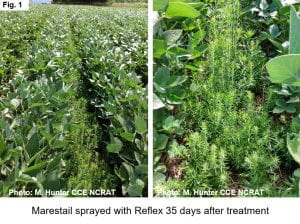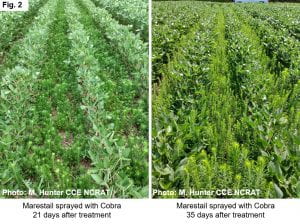June 30, 2022 marks the official cutoff date for the over the top use of XtendiMax, Engenia and Tavium on Xtend or XtendFlex traited soybean in New York. Now the question that will be asked by growers is “I’ve planted Xtend soybeans, now what are my options?”.
For soybean growers that have resistant tall waterhemp and palmer amaranth in soybeans there are other effective herbicide options available. The postemergence control of resistant tall waterhemp and palmer amaranth in all soybeans, including conventional, can be achieved by applying Reflex or Flexstar (fomesafen) or Prefix (s-metolachlor + fomesafen) or Warrant Ultra (acetochlor + fomesafen) before the weeds reach 3 inches tall. If necessary, a late rescue treatment of Cobra (lactofen) can be applied.
Unfortunately, for soybean growers that have multiple resistant marestail (Groups 2 and 9) in Xtend soybeans there no other effective postemergence herbicides to control this problematic weed without using one of dicamba herbicides. Postemergence applications of Reflex, Flexstar and Cobra, will not control marestail (see fig. 1 & 2).
For growers that planted XtendFlex soybean, Liberty (glufosinate) herbicide will provide an additional option for the postemergence control of marestail under 6 inches tall. Once marestail is over 6 inches tall it becomes increasingly difficult to control. For best results, apply 32 to 43 ounces of Liberty plus 3 pounds spray grade ammonium sulfate per acre using 20 gallons water as a spray carrier to ensure adequate coverage. Hot, sunny, humid days provide ideal conditions for the application of Liberty herbicide. Consider making applications between dawn and two hours before sunset for improved control of some tougher to control weeds such as marestail. Liberty herbicide can be applied up to R1 or beginning bloom stage in soybeans.
Always read and follow label directions prior to using any herbicide. If you have any additional questions about late season soybean weed control, contact your local Cornell Cooperative Extension office.


